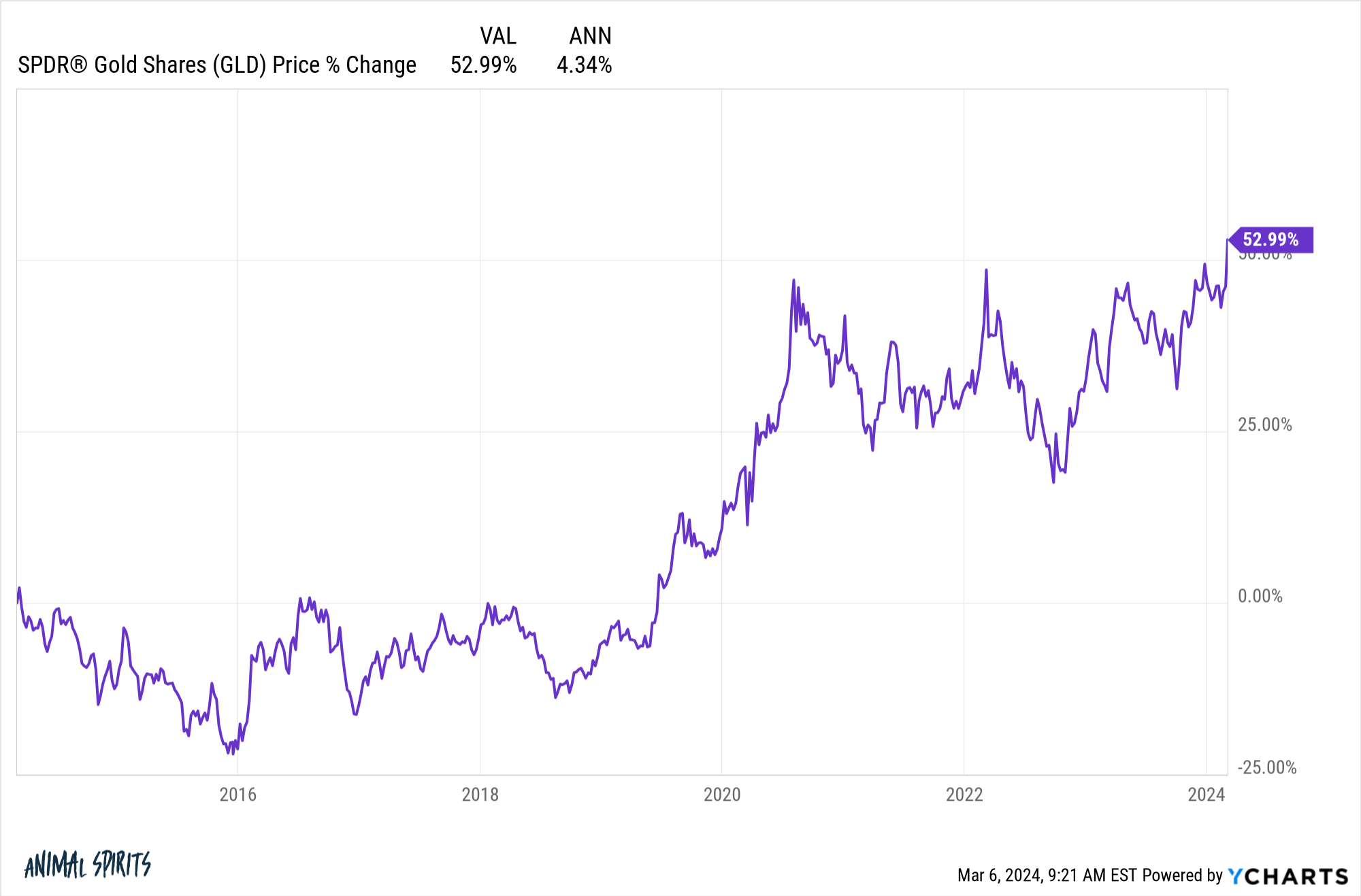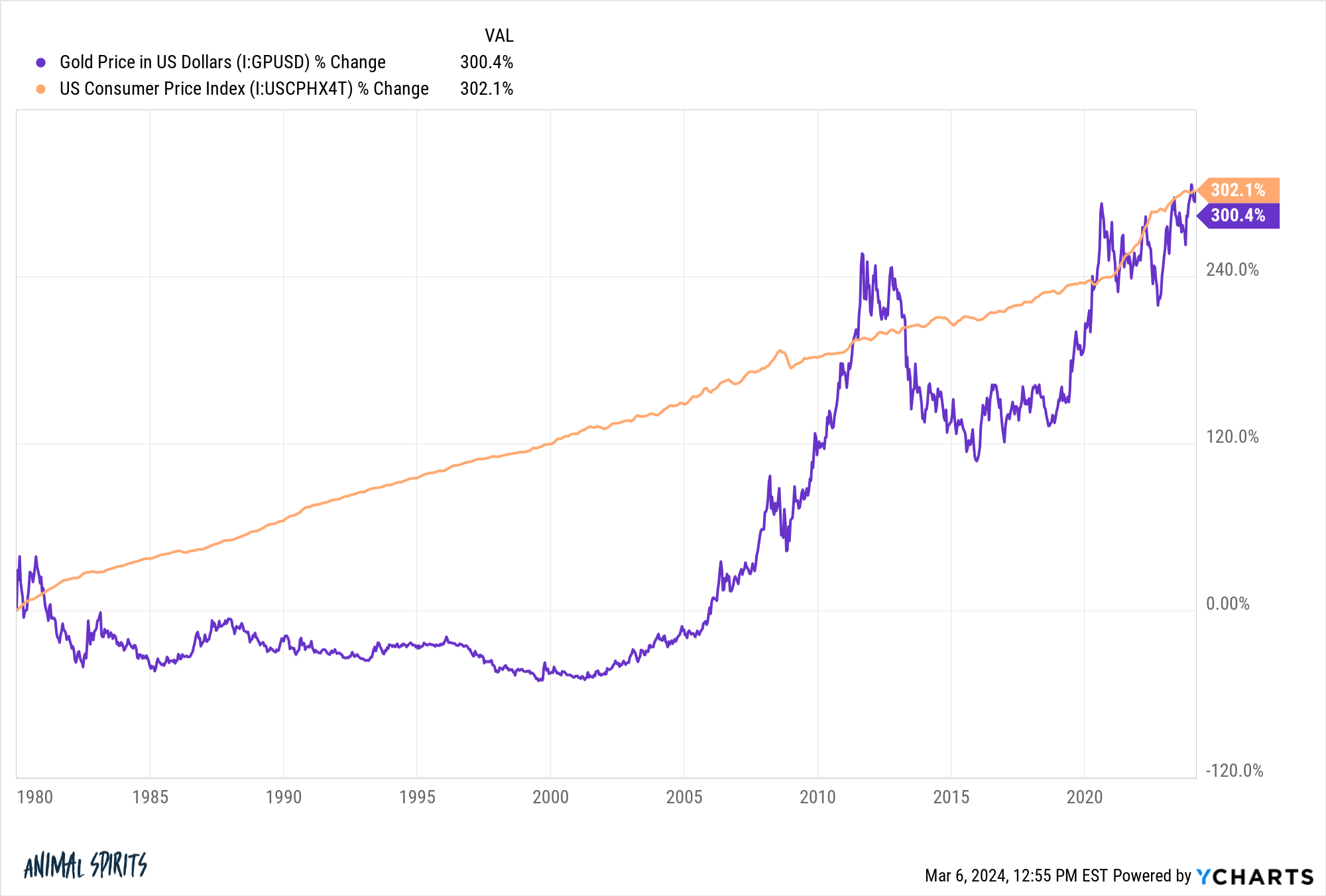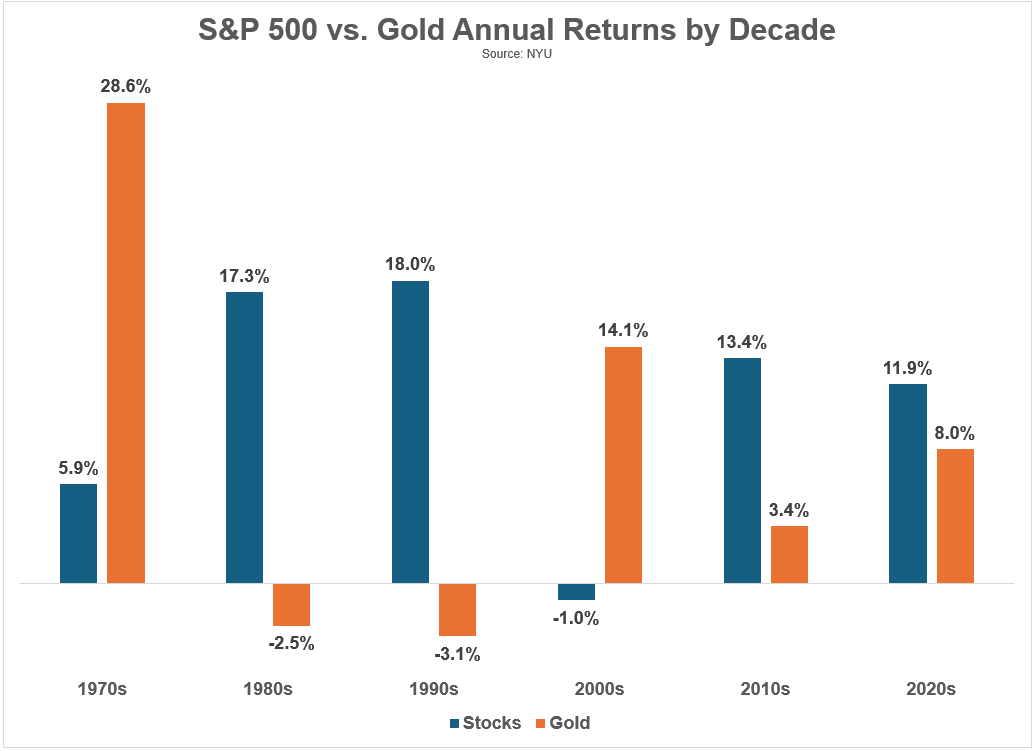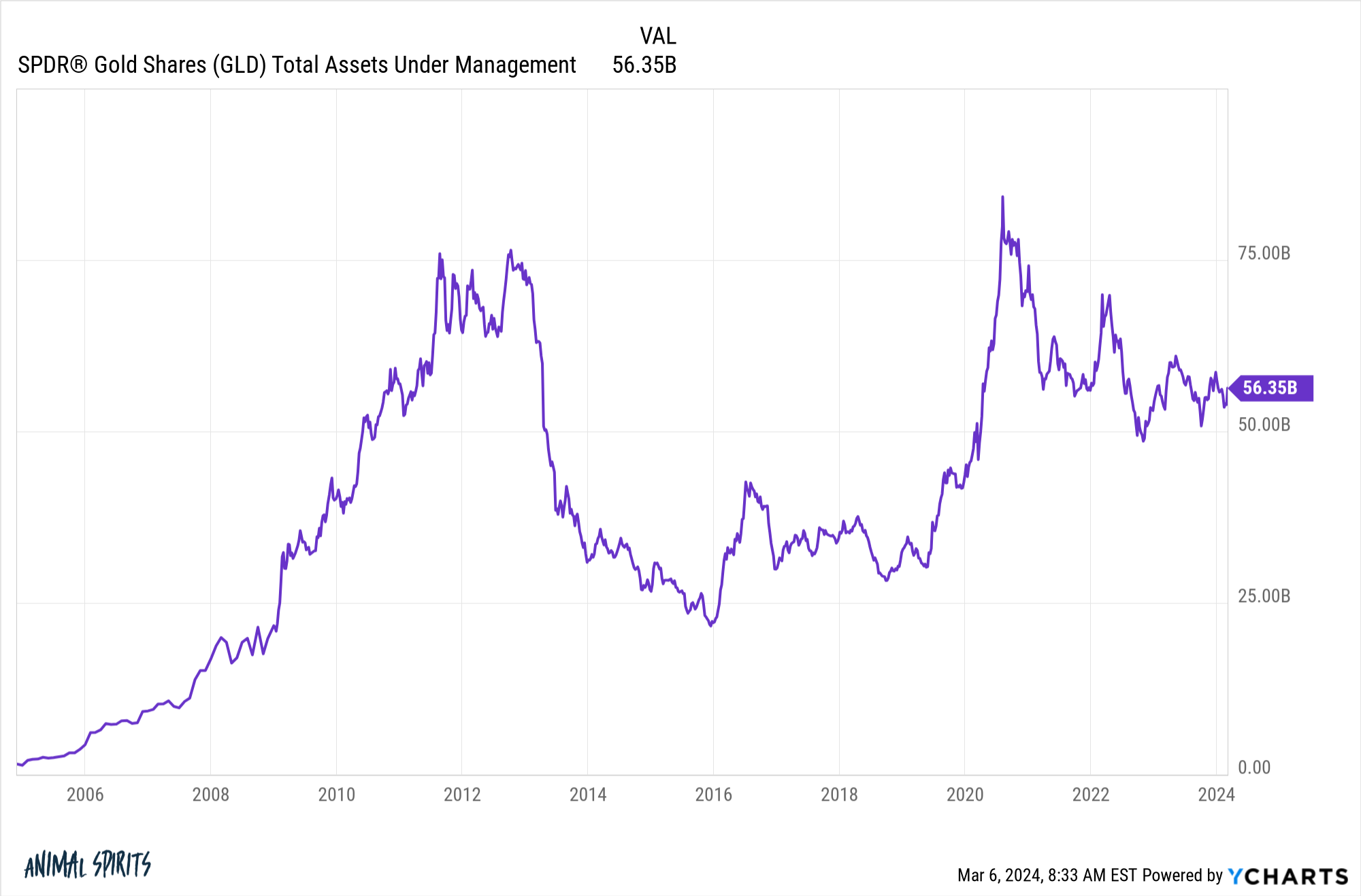
[ad_1]
A reader asks:
I don’t recall any questions being requested on the advantages of gold investing. Gold has elevated by round 7% a yr for the previous 10 years nevertheless it’s by no means talked about on any of The Compound exhibits as funding. It’s not higher than holding money as money buying energy will go down as inflation goes up whereas gold will at the very least sustain?
Gold hit a brand new all-time excessive this week at over $2,100 an oz. So it’s time to have a look since extra individuals can be being attentive to the yellow metallic.
Returns for gold have been first rate over the previous 10 years however not fairly 7% per yr. I’m exhibiting returns of greater than 4% per yr over the previous 10 years:

Gold is seen as a diversifier so despite the fact that it hasn’t stored tempo with the inventory market1 over the previous decade, it may be useful to have a look at the longer-term returns.
Fortunately, Aswath Damodaran added gold to his historic annual return knowledge at NYU this yr. These are the annual returns numbers for shares (S&P 500), bonds (10 yr Treasuries), money (3-month T-Payments) and gold from 1928-2023:
- Shares +9.8%
- Bonds +4.6%
- Money +3.3%
- Gold +4.9%
So gold has performed higher than bonds and money however trailed the inventory market by an honest clip.
However this knowledge requires some context.
The value of gold was primarily managed by the federal government till 1971 when Nixon ended the gold normal of changing {dollars} to gold at a hard and fast fee.
From 1928-1970, gold was up 1.4% per yr which was lower than the annual inflation fee of two% in that point.
From 1971 to 2023, gold was up 7.9% per yr. That lags the S&P 500 return of 10.8% yearly, however the correlation of the annual returns was -0.2, implying some stable diversification advantages.
Nevertheless, these post-1970 returns require some context as properly. The returns are front-loaded within the Nineteen Seventies.
From 1971-1979, gold was up practically 1,300% in whole. That was adequate for a 9 yr annual return of 33.8% per yr.2 Some would say gold was an incredible inflation hedge within the Nineteen Seventies. Others would say these large returns have been simply enjoying catch-up from the a long time by which the federal government artificially held the value down.
In case you have a look at the features since 1980, they inform a special story. From 1980-2023, gold was up simply 3.2% per yr. That lagged the returns for shares (+11.7%), bonds (+6.5%) and money (+4.0%).
In that very same timeframe, the annual inflation fee was 3.2%, which means gold had an actual return over a 44 yr interval of an enormous fats zero. Technically the value of gold has trailed the buyer value index since 1980:

That’s a troublesome search for a supposed inflation hedge.
It’s vital to notice that though gold hasn’t performed a lot on a long-run foundation outdoors of the Nineteen Seventies, there have nonetheless been durations when it supplied priceless diversification advantages.
Through the misplaced decade of the aughts from 2000-2009, the S&P 500 was down 1% per yr. In that very same decade, gold rose greater than 14% on an annual foundation.
Actually, this century gold is outperforming the S&P 500. These are the annual returns from 2000-2023:
That’s from an all-time dangerous start line for big cap U.S. shares however the identical is true of gold in 1980.
Shares have outperformed within the decade-and-a-half because the finish of the Nice Monetary Disaster. Listed here are the annual returns from 2009-2023:
- Gold +6.0%
- S&P 500 +13.8%
So the place does this go away us?
As with most asset lessons, you may craft purpose for or towards gold relying in your begin or finish date of historic returns.
The long-term case for gold is up within the air. There are not any money flows — no dividends or earnings or earnings. However individuals have positioned worth on gold for 1000’s of years. Meaning one thing.
There are additionally the diversification advantages, which you’ll clearly see when breaking out the annual returns by decade:

Diversification is gold’s largest promoting level. It actually does march to the beat of its personal drum.
I’ve nothing towards gold. I simply don’t assume it’s essentially the correct funding for my threat tolerance or allocation preferences. I don’t personally put money into gold however I can see why some buyers select to carry an allocation of their portfolio.
It’s the type of asset class that requires rebalancing into the ache, although, as a result of there can be instances when it badly lags the inventory market.
It’s additionally attention-grabbing to consider gold by means of the lens of millennial/Gen Z gold — Bitcoin.
The flows into Bitcoin ETFs these previous few months have been spectacular.
Even with new all-time highs within the value of gold, the AUM for the largest gold ETF (GLD) is one-third under its peak:

Gold is way much less risky than bitcoin so there is usually a place for each to exist.
However it will likely be attention-grabbing to see if the demand for Bitcoin ultimately dampens the demand for gold.
Gold has 1000’s of years on crypto so I wouldn’t make that guess simply but however know-how can change the world in a rush.
We talked about this query on the most recent version of Ask the Compound:
Invoice Candy joined me once more on right this moment’s present to debate questions concerning the variety of shares it takes to be diversified, tax planning for a transfer to a high-tax state, retirement contributions when you have got freelance earnings and the way tax credit work.
Additional Studying:
What Causes the Value of Gold to Rise?
1The S&P 500 is up 12.5% per yr over the previous 10 years.
2$10,000 invested in gold on the finish of 1970 could be price practically $160,000 by the tip of the last decade.
[ad_2]